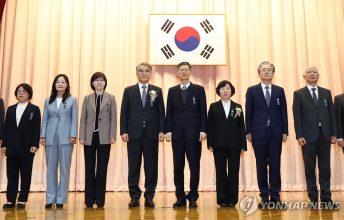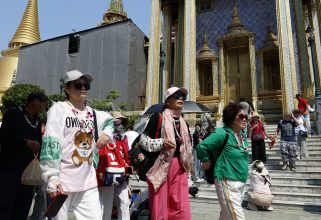필리핀 ‘카지노 관광대국’ 꿈꾼다···현지정부 올해 관광객 60억명 유치 목표
* ‘아시아엔’ 해외필진 기고문의 한글요약본과 원문을 함께 게재합니다.
[아시아엔=필리핀 인콰이러 편집국·번역 김아람 기자]“건물을 지으면 와서 놀게끔 돼있다. 그러다 보면 거기서 잠도 자고 하는 거지.” 영화 <꿈의 구장>(1989) 중
이 대사처럼 호텔과 관광의 긴밀한 관계를 드러내주는 문장도 없다. 카지노사업과 호텔은 늘 뗄래야 뗄 수 없는 존재로 함께 성장해왔다. 최근 필리핀에서도 관련 사업 육성이 한창이다.
부동산 컨설팅 전문기업 존스랑라살(JLL)의 끌라로 코데로 차장은 “카지노 같은 오락산업은 호텔 등 관광산업과 함께 성장한다. 미국의 라스베이거스, 중국의 마카오가 대표적인 예다”라고 설명했다.
그는 “최근 몇 년간 필리핀 파사이시티(Pasay City) 내 오락시설 집중 지역에 대한 투자가 급증하면서 카지노사업도 더욱 활성화 될 예정”이라며 “수요를 맞추기 위해 최근 4성급, 5성급의 고급 호텔들이 완공된 상태”라고 전했다.
부동산 전문가 소리아노는 “필리핀 정부는 전세계에서 손꼽히는 카지노 산업을 양성하는 것이 목표”라면서 “크레딧스위스투자은행(Investment bank Credit Suisse)는 필리핀 카지노 산업이2018년까지 60억달러(7조1500억원)의 이익을 낼 것이라고 전망했다”고 밝혔다. 이는 전세계 카지노 단지 중 4위권 규모다.
중국 경제위기에 필리핀 카지노·호텔 사업도 ‘흔들’
그러나 중국 발 경제위기가 성장의 걸림돌이라는 분석도 나오고 있다. 글로벌 부동산서비스 기업 콜리어스인터내셔널 필리핀 지부에서 근무하는 율리우스 게바라 연구감독은 “최근 중국의 경제성장률이 둔화되면서 마카오 카지노 사업도 침체를 겪고 있는 상황”이라며 “필리핀 카지노도 영향을 받고 있다”고 전했다.
그러나 그는 “중국경제 침체 여부에 상관없이 필리핀 정부는 향후 5년간 해당 산업을 집중 육성할 계획”이라며 “필린베스트그룹(Filinvest Group), 알리(ALI)등의 호텔 투자가 계속되고 있는 상황”이라고 덧붙였다.
실제로 현지 대도시를 중심으로 고급 호텔이 속속 들어서고 있다. 한편 콜리어스인터내셔널이 발표한 ‘2015 필리핀 연구 및 전망 보고서’에 따르면 작년 2개의 고급호텔이 완공되면서 1천7백개가 넘는 객실이 추가됐다. 향후 수도 마닐라에만 객실이 2배로 증가해 총 객실 수가 3만2천개로 늘어날 예정이다.
필리핀 정부도 올해 외국인 관광객 유치를 작년 55억명에서 다소 증가한 60억명을 목표로 하고 있다. 필리핀 정부의 관광산업 육성이 중국 경제 위기에 잠시 주춤하고 있지만, 성장세는 계속될 전망이다.
‘Casino tourism’ driving more hotels to be built in PH
“If you build it, they will play. Then they’ll stay.”?(“Field of Dreams,” 1989)
It’s the type of partnership that has been pouring in the profits for the tourism industry. The tandem of casinos and hotels?both feeding off the other’s penchant for reeling in the big spenders?hasn’t escaped the eagle eyes of property analysts, either.
“Indeed, the growth of gaming/casino revenues is driving hotel demand, as shown by the highly developed gaming markets such as Macau in China and Las Vegas in Nevada, the United States,” observed Claro dG. Cordero Jr., Jones Lang LaSalle Philippines’ associate director and head for research, consulting and valuation.
“In the last few years, majority of the new stock has been located in the Entertainment City area in Pasay City, geared toward the gaming/casino market. Nonetheless, there are new high-end developments (4-star hotels and up) that were recently completed to serve the traditional markets such as The Ascott-BGC and the soon-to-be completed Shangri-La and the Grand Hyatt developments, both in Bonifacio Global City. For areas outside the central business districts (CBDs), Ayala Land Inc. (ALI), as an example, has launched the Seda brand to serve the needs of the business traveler,” added Cordero.
Property portal Lamudi Philippines said in a statement that, “One of the main objectives of the Bay City is to compete with Macau and Sentosa in Singapore for gambling revenues, especially from Chinese high rollers. However, the clampdown on corruption in mainland China has affected the industry, which is the reason these properties are offering noncasino-related attractions to attract families.”
“To remain competitive, incorporating a hotel and casino concept is a natural integration to stay in the game,” noted property analyst Enrique M.Soriano III.
Soriano, who is the Ateneo program director for real estate and senior adviser for Wong+Bernstein Business, added that the concept of “participative entertainment” creates a powerful appeal for hotel guests, and an even more compelling reason for dedicated high rollers to stay loyal.
“The key lies in differentiating and constantly innovating the hotel and casino complex,” Soriano stressed.
“The Philippines is aiming to become one of the major players in the worldwide gaming industry, and Manila is in the midst of various casino openings, expansions and construction. Investment bank Credit Suisse forecasts Philippine casinos to generate gaming revenue of $6 billion by 2018, potentially making the country one of the top four in the world,” said Soriano.
Economic slowdown
Colliers International Philippines’ director for research and advisory services Julius Guevara, however, said the hotel casino trend has been put to a halt regionally due to the economic slowdown in China.
“This has gravely affected the gaming industry in Macau and has also led in a steep reduction in revenue here in the Philippines,” said Guevara.
He added that 4- and 5-star hotels need not have a casino.
“Sometimes a brand can have these ratings just on the basis of their reputation for high-quality service, such as a Shangri-La or Peninsula. Technically, these star ratings are based on such features as the room types, service, number of function rooms and restaurants anyway, and casinos are not a weighty criterion,” added Guevara.
Cordero said the pipeline for the Philippine hotel supply sector is still on an upside, as more than 12,000 rooms are expected to be completed until 2020. The new supply will put some pressure on occupancy rates, as well as the growth of room rates in the short- to medium-term.
Colliers, in its 2015 Philippine Research and Forecast Report, also concurred that substantial hotel room stock will be added in 2016.
The Colliers report said that around 1,739 new rooms were introduced in the metropolis in 2015, with two new hotels (Novotel Manila and Jin Jiang Hotel Ortigas) being delivered during the second half of the year.
The Novotel Manila in Araneta Center, Quezon City, started operations in the last quarter of 2015, in time for the arrival of overseas-based Filipinos during the Christmas season. Colliers added that “the hotel was well-received, especially since there has been a lack of quality accommodations in the northern part of the metropolis.”
The Colliers report also reported that “Jin Jiang Hotels, one of the largest hotel operators in China, opened its second hotel in the Philippines in Ortigas Center. Should all projects be completed as planned, Metro Manila will see another 5,300 keys added to its room stock in 2016. This includes two 5-star hotels in Bonifacio Global City in Taguig City?the Shangri-La and the Grand Hyatt Manila.”
Soriano predicted that the country would continue to experience hotel growth in the next five years, despite some “bumps” along the way.
Filinvest is ramping up its hotel portfolio, and is expected to add 5,000 rooms by 2020. ALI has created its Seda Hotels, complementing its mall developments and putting several hotel rooms across the country.
Alliance Global and Resorts World Manila is targeting 1,500 rooms, plus another 3,200 rooms in Resorts World Bayshore and Megaworld’s Richmond Brand to be spread across the country.
Manila’s hotel supply is expected to double to 32,000 rooms.
Affordable hotels
Cordero said the main strategy of 3-star hotel developments, aside from pricing, remains to be their strategic location, as they are practically near everything, which would be convenient for its market of upwardly mobile guests who demand for value for money. A growing trend is that 3-star developments have been serving as transfer accommodations for other bigger hotels, especially for resort-type developments outside Manila.
Soriano observed that the “ease and convenience of booking, great customer service, competitive positioning on a specific value proposition, e.g. wellness-centric facilities,” drive the growth of 3-star hotels.
“Many of these types of hotels are in Metro Manila’s major CBDs: Jin Jiang and Holiday Inn in Makati, Seda in BGC, and Marco Polo in Ortigas Center. Another Seda property will soon open in Vertis North in Quezon City, which will be one of north Metro Manila’s few quality hotel properties,” disclosed Lamudi.
The sunshine industry?
Rosy as the outlook may be for the hotel industry, some factors also need to step up before it can be called a “sunshine industry.” Lamudi said that this would “depend on how successful the government will be in attractingforeign visitors.”
It reported that from an original target of 6 million foreign visitors for 2015, the Department of Tourism lowered the country’s target to 5.5 million, eventually settling for 5.3 million by year-end, according to Undersecretary for Tourism Development Benito Bengzon Jr. The target for 2016 has been set to 6 million.
“In addition, occupancy rates in Manila slipped to an average of 68 percent in the first half of 2015,? 1.6 percentage points lower compared to the same period in 2014. However, this increased to 70 percent by the second half of 2015, thanks to the APEC Summit that the Philippines hosted,” revealed Lamudi.




